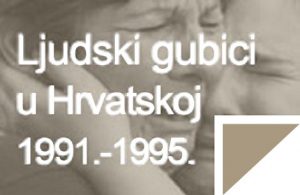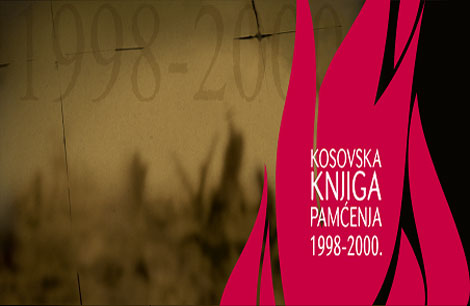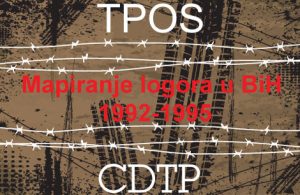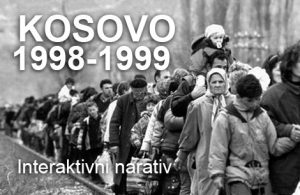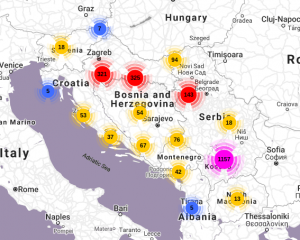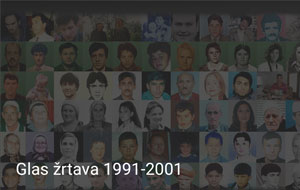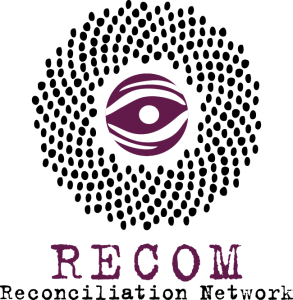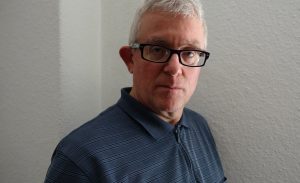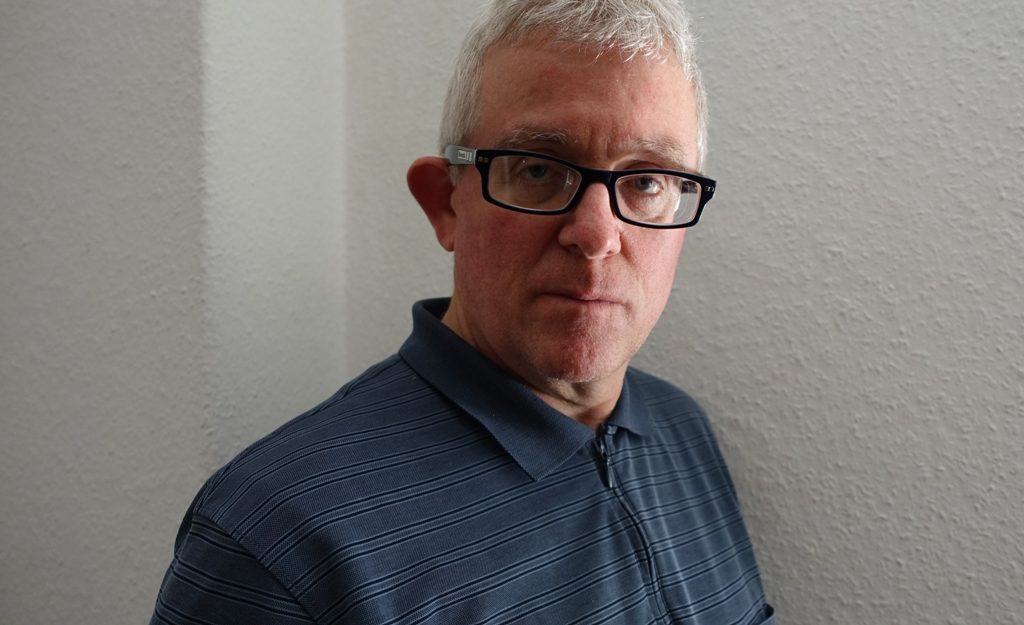
27.05.2016.
Denial is a feature of life
Interview: Ger Duijzings
Ger Duijzings is a Dutch anthropologist and author of a legendary book, “Religion and the politics of identity in Kosovo” (London: Hurst and New York: Columbia University Press, 2000), the published version of his doctoral thesis which he completed and defended at the height of the war in Kosovo (1999). Duijzings later moved on to Bosnia as the area of his research. He was one of the authors of the Srebrenica Report, published by the Netherlands Institute for War Documentation (NIOD) in 2002, mandated by the Dutch government for the purpose of casting light on the circumstances of the fall of Srebrenica in July 1995. He authored and edited several books and numerous papers about the former Yugoslavia, amongst other things analyzing its post-conflict societies. His essay, Commemorating Srebrenica, in which he discusses the subject of memorialization, formed the starting point for this interview.
By Jelena Grujic Zindovic
Last year, 2015, was a year of many anniversaries. What does the way in which important dates related to the wars in the nineties are marked tell us?
I have not been these following anniversaries very closely. I never even attended the commemorations organized in Potočari. I did, however, give several talks last summer at the occasion of the twentieth anniversary of the Srebrenica massacre here in Germany (in Munich, Regensburg and Rosenheim), presenting my views on the basis of the research I had done many years before (between 1997 and 2002) . In the meantime, I made a conscious decision to take some distance from the events in the former Yugoslavia, to clear my mind a bit, but with the intention to return to it at an appropriate point in time, when I could feel – “Okay, I can handle it again”.
I do have problems with these anniversaries in general, because I feel they are easily used as platforms for all sorts of (inappropriate) political statements. I avoid being there, to be honest.
Working as an anthropologist with people who have gone through these war experiences and felt the consequences on their skin most drastically, I always empathize with their position: often at these anniversaries they do not really have a voice, or, when they do have a voice, it’s a sanitized one, edited, you know, to make it digestible within a given political context.
I see my task primarily as describing how a community or a society that existed before the war as a relatively, – I wouldn’t say utopian – but harmonious kind of living together, falls apart rapidly. How local communities and municipalities such as Srebrenica or Bratunac were drawn into the war, sparked by events and political processes happening elsewhere. I am primarly interested in the confluence of local and wider forces and developments that ended in the Srebrenica massacre. This has always been my main objective – to discover what draws people into this cycle, what changes their behaviour, how a tense pre-war situation evolves into a war situation, producing some of the worst crimes committed in the former Yugoslavia. My aim is to describe this sequence of (local) events in great detail.
I am not necessarily pursuing any further research into post-war issues, as to how communities are now trying to reconcile themselves. I tried that in the text on Srebrenica in the post-war situation, which you have translated from English and published in Serbian on the RECOM website.
To me, it seems hard to bring these communities together again. I think it is an illusion to believe that, after a war, the different versions of historical experience can be harmonized. And so in that article I suggested that it is probably inevitable that the different communities embrace different stories, or different narratives about what happened.
You mentioned your intention, after years of distancing, to go back to study the pre-war past, before everything started. Do you have any expectations what you will find there?
I think it is the economic crisis in combination with political transformations that constitutes the main key to understanding why the war started. Of course, this was overlaid by all sorts of historical experiences, mythical narratives, and references to World War Two. I’m not saying they’re unimportant, because I think that the events during World War Two were indeed quite traumatic, and that one cannot disregard these memories of previous conflicts. Ten or fifteen years ago, I thought that the answer would probably be more in the historical experiences, but I’ve moved slowly away from that type of argument.
All these historical experiences I have called ‘mythical’ because they have assumed mythical proportions, and people were referring to them throughout the war. This can be seen for example in what Mladić declared when he took Srebrenica, that is, that the take-over of Srebrenica is an act of revenge for what the Turks (or ‘Dahijas’) did “to us” 200 years ago. I mean, these references to past conflicts are relevant in an ideological sense, and therefore you can’t completely dismiss them.
But when you say you have moved away from that, in which direction have you moved in search of the answers?
I’m writing a new version of my local history of eastern Bosnia, which was an annex to the NIOD report. In this book, I described various important historical episodes in the local history of Srebrenica and Bratunac, chronologically ordered, but I did it as an anthropologist, focusing on the particular periods that people were referring to in their explanations or justifications for particular things they were doing – like World War One, World War Two, or the First Serbian Uprising.
In the new book that I am planning to write, I will probably reduce the historical references and tune down the analysis that looks at the historical legacies, and give more weight to post-socialist economic and political transformations, the process of privatization for example. For me, it’s still an unanswered question why and how this massacre could happen, and what the local conditions and circumstances were for it.
Can you share with us some of your experiences at the time when you were working on the NIOD report.
During all these years, even when we finished our work in 2002, there were hardly any Srebrenica cases that had been dealt with at the ICTY, apart from the Krstić Case. All this material we have today from the ICTY trials – the witness statements, the statements of perpetrators and victims – has now entered the public sphere, you get very detailed information about the things that happened there, very precise information about the executions sites for example and the individuals and units that were involved in the killings. In that sense, we know a lot more. But you don’t enter people’s minds, except for those of the victims. Although, even for the victims, I don’t think trials are very satisfactory experiences, because they are questioned on very specific details and concrete episodes. They can hardly ever tell the whole story as they would like to tell it, but are just used in that judicial process to provide the bits of evidence needed to reach a conviction.
So when you read the transcripts you realize that the facts data that are in the process of being established still don’t bring, for me at least, up to now, a better understanding of the motivations – who took the decisions, and why, and why did they all participate in this massacre, in the execution? We actually have no clear sense of what happened on the Serb side.
You think it’s possible to understand why that happened?
I think it is possible and desirable to bring a certain understanding of such historical events. I guess somebody must have taken this decision, probably the easiest and least complicated solution to a perceived ‘problem’ – to kill all of them. When you get onto Arendt’s idea of the banality of evil, this is where people do the most evil things, because it’s the easiest and most expedient thing for them to do. And it has nothing to do with historical experiences from World War Two, or whatever – but it has a lot to do with complete loss of moral rectitude. I would like to bring this into view, in the book that I want to write in the next two or three years. The problem is that there’s still very little material on what the perpetrators have said as to why they took these decisions, etc. Just nips and bits that you can get from the transcripts from the Tribunal. It will be a difficult task, but that’s what I want to do.
Perhaps at bottom, war is something incomprehensible?
I do agree with that. You know, I don’t have the pretension to be able to explain all of this, but, as an academic, I do think that I should be able to throw some light on it. For instance, the reasons for the outbreak of the war have to be sought in this political, economic transformation. Then the war has a momentum of itself. Things get out of hand, and you get a cycle of violence and forms of mass psychosis or whatever you want to call it. I’m trying to find inspiration in psychoanalysis, from the work of therapists such as Melanie Klein. She’s famous for developing particular concepts that can be used in this context, like ‘projective identification’ and ‘envy’. What is difficult with psychoanalysts is that they usually talk about individuals in peaceful circumstances, and not about war. But they do describe processes of projection, identification and envy, which I believe do count when one tries to understand what happens in violent settings. I find these to be plausible elements of an explanation, which are not often used in the literature on the former Yugoslavia. I’m trying to put together a puzzle, primarily at a local scale, using all sorts of ideas from different people and different disciplines.
I would like to go back again to the subject of memorialization. You are critical of the ways they are organized, but how do you suggest atrocities should be memorialized, because there seems to be a clear need for this?
I indeed am skeptical about these anniversaries and these commemorations, for obvious reasons. I’m not the first one to say this. This does not mean, however, that I want to be dismissive about the extremely important role they may have for the victims.
However, I am much more convinced that commemoration is something that should happen in people’s minds. Perhaps the best form of commemoration is silence, as it gives some sort of serenity. And this type of situation can perhaps be produced. I’m inspired by the work of Joanna Rajkowska, a Polish contemporary artist who produces art objects which she places in public spaces which have no obvious relationship or one-to-one correspondence with historical events that have taken place there. She often places these objects in sites and locations that carry with them a heavy burden of traumatic history. I can refer here to the palm tree that she erected at one of the busiest intersections in Warsaw at the fringe of the former Jewish ghetto: It’s an object that at first glance seems to be completely out of place. Of course, Warsaw is a city that was heavily destroyed, and its inhabitants went through a lot of traumatic experiences. She put up this palm tree not to trigger any kind of discussion or debate…but what she’s created is a point of reference around which people can gather, and where they all may have their own thoughts as to what this object stands for. She has somehow created a sphere around this object, where contemplation emerges.
So, art could offer answers to the questions of memorialization?
I’m not saying art is the answer, but I’m just saying that it may be one of the best ways to actually bring people together and make their different versions of what’s happened in eastern Bosnia coexist. The book that I wrote and published in 2002 was a failed attempt to bring different perspectives together, and to write a narrative that would do justice to all the different historical experiences and versions of history, .
My subsequent experience was that this was not something that was going to be readily accepted. Because I think that the communities, as such, are radically divided, and I have grown rather skeptical about trying to produce a scholarly narrative that does justice to the different sides in this story. Although I still think that’s what we are supposed to do.
Therefore I feel art may be an alternative route, and perhaps a much more powerful way of achieving contemplation. I already said that, Joanna Rajkowska’s work is an inspiring example for me, and I love the idea of developing with her a public art intervention in Srebrenica as an alternative to writing a book.
There is no monument related to the victims or events from the nineties in the entire region that is dedicated to all sides, nor are there commemorations that pay respect to the victims of different ethnic backgrounds. Even after their deaths the victims remain divided, as the memories of them are divided in our societies. How do you see communities reconcile in such an environment?
First of all, it’s probably impossible to reach agreement on traumatic historical experiences and events. I think it is possible, in spite of this differential, to reach some form of reconciliation by, let’s say – respecting the different views people may have. How you do that, that’s a difficult question to answer; but I’m inclined to use Joanna Rajkowska’s work as an example of what is possible, where differences are not brushed away, but where people are brought together in physical proximity and start contemplating around a shared art object, as a common reference point. People can sit around it and use it in different ways and put their own understanding and meaning and interpretation into it. That doesn’t mean that everybody should think the same.
I’m much more in favor of forms of commemoration where there’s also an open space for contemplation, where it’s not the politicians and religious leaders monopolizing the situation. Perhaps this is a part of what the RECOM project is trying to do – you create a shared platform for ordinary people to be together, and that is already an achievement – to create a situation where people can be together, physically. They don’t necessarily need to speak or talk through their traumatic experiences to reconcile themselves, and to find a certain degree of peace with each other.
I think that finding this kind of peace, of developing friendly relationships, is also a matter of personal choice. In spite of everything that’s happened, you can still decide, “Okay, I am not letting history get in the way”, or “I’m not carrying my traumatic experiences with me into the future”, and make a positive choice for a peaceful way of engaging with others who may have been in the enemy camp.
Can reconciliation happen at all if we don’t have a basic common ground?
Yes, I think some common ground needs to be there, but I don’t think you can completely harmonize individual experiences and create completely shared stories. One of the reasons this plurality exists is that each single individual may have gone through very personal experiences of violence, or very individual experiences of victimization, and these experiences remain very personal and subjective. The experience of violence is one of the most subjective experiences, it is an embodied experience that cannot be denied. Experiencing violence on your body, through torture or whatever, is an extremely upsetting experience, which tends to occupy your entire mental world. It makes these experiences very personal and subjective, and you cannot dismiss that. I’ve done many interviews, and that’s the thing you get, people have very different stories, very different things to tell about what’s happened to them, and all these individual stories get lost if you create a sanitized, harmonized story, because at that level the personal details are brushed aside. All these personal and subjective experiences are marginalized.
You’ve made an experimental film with artist Rastko Novaković, Lebensraum | Living Space (2009), which is, in your own words, a critical commentary on how we represent war”. Can this kind of work be a way to fight the denial that very much marks post-war societies? And – maybe first, why is the denial so strong after so many years here in this region?
I find that question impossible to answer. I don’t know, you are living there, you probably know much better than me what the answer is to that question. But I do indeed find that to be one of the most striking aspects, yes. I’m the first to go against forms of denial. I can get deeply angry about forms of denial, yes, but in fact it is a feature of life. It seems that most people deny what has happened, or deny their own involvement, or deny their own approval of things that were done in their name… I can’t tell why they do it and what reasons they have. My impression is many take the road of the least resistance, what seems to be an easy and convenient way of dealing with the past, a form of escape, perhaps?
Did you expect such denial would occur, back in the days when you were working on Srebrenica?
It was, of course, clear from the beginning, that the massacre was off-limits when I was doing my research in eastern Bosnia. We knew what had happened… although we didn’t know the details, but no local Serb was going to talk to me about that. I did my interviews between 1997 until 2001, and in spite of the huge silence, some local Serbs living in Srebrenica or Bratunac, were actually really good people to talk to, for me important sources of information. For example the former communist officials, who had been in power until the elections in 1990, came with very interesting and rich accounts. These were people who had seen their lifework somehow destroyed, they made something out of Srebrenica from the 1970s onwards, and then the nationalists came and destroyed all of that. And they often had sophisticated views on what had happened. They were not denying what happened in July 1995, although they couldn’t say anything, also because they didn’t participate in these events.For many others I talked to, who had been there during the war, this was a non-theme for other reasons – it was just impossible to talk about what happened in July 1995. What could be discussed, what I could talk about with them, was the way they were victimized. I am sure you know the historical narratives and stories, the kind of things you hear from Bosnian Serbs. You would hear how relatives were killed or whatever, but you couldn’t discuss anything related to July 1995, whether they participated in it or not. I think they continued to keep it as a very inconvenient truth that could not be openly spoken about.
It would be interesting to see how your informants would answer those questions nowadays. I have the impression that today denial is not about whether the massacre happened, but rather “just” about whether this was genocide. Denial has moved to more sophisticated levels.
Yes, exactly. Erik Gordy describes that in his book. But, of course, it makes a difference whether you live in Belgrade or in Bratunac. I am curious to know how openly you can talk about the massacre in Bratunac, for example, I assume it is still more or less a taboo theme.
In Mathias Fink’s recently published book on the Srebrenica genocide (2015), you get a clear sense that it was a highly secretive operation, this massacre, even more the re-burial in the secondary mass graves. It was clear to all participants that this operation was something that shouldn’t happen. It was clear to them that they were doing something that completely went against principles of proper conduct in war, and nevertheless they did this, yes? That’s why it was a highly secretive operation. The commanders were trying not to produce a paper trail of it, because they knew they would be incriminated because of it.
It’s an ugly and very shameful thing now, knowing that one has been participating in mass murder. I don’t know… denial is perhaps the easiest way out… like, “I didn’t do it, I wasn’t involved in this”, “No, somebody else gave the order”, “I would have been killed”… yes? The perpetrators use all sorts of rationalizations to avoid that sense of responsibility.
Can a regional commission for establishing facts about the crimes committed and giving a voice to the victims, be a way out of such a post-war situation in our region?
I think RECOM is a very welcome initiative. One may be critical of some of its elements, but it’s without any doubt one of the building stones for a future that, hopefully, is a bit more positive. Personally, I do not have a strong urge to get involved in such initiatives, because I have decided not to put my energy into this issue of post-war reconciliation. Rather, as an anthropologist I try to stick with understanding how local communities are drawn into violence, how individuals slide into war… how this process happens. You know, my time is limited.
Besides, artistic initiatives deserve to be supported in my view. It would be a good thing for a platform such as RECOM to consider some artistic strategies and avenues as well, and not to rely solely on procedures that allow traumatic experiences to be narrativised. Giving these experiences a place in artistic forms and formats can perhaps contribute more to reconciliation and help people to come to terms with what’s happened.
